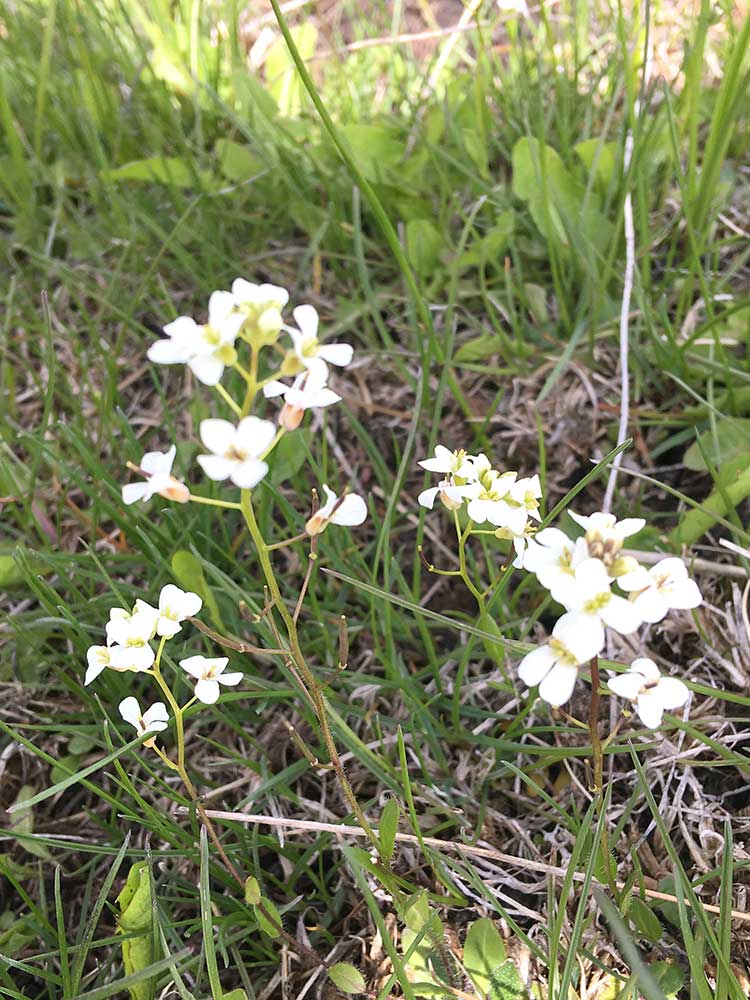Noccea fendleri ssp. idahoensis / wild candytuft
- white crucifer, four petals in two parallel rows
- flowers in terminal clusters
- basal rosette leaves with a few on the stalks
- wetter areas
Also known as: alpine pennycress, rock pennycress
Synonyms: Noccaea montana, Thlaspi montana, Iberis badensis
Noccaea is one of those “problematic” genera; more than a dozen name changes have been associated with this species. Call it whatever you want. There are several subspecies and whether the ones in the Valley are truly Idahoensis or not, I can’t really say. But as an Idaho chauvinist, I’ve labeled this such. In any case…
Wild candytuft is an attractive wildflower in the Brassicaceae, which itself is saying something. It flowers mostly in the spring. The flowers have 4, bright-white petals, each perhaps ¼” long, appearing as two parallel groups of two rather than as a cross. These grow at the top of one or several erect, sometimes branched, stems, and occur in rounded clusters. The plants may begin flowering even when they are only an inch tall. Then the flower stalk elongates and continues producing flowers as the first ones mature into fruit.
The seed capsules are flattened and heart-shaped with notched tip, sort of like overgrown shepherd’s purses.
Wild candytuft leaves are smooth, not hairy. They may have several teeth. Or not. Basal leaves form a rosette with several smaller, alternate leaves up the stem. The basal leaves may be as much as 1½ inches long, tapering at both ends. Stem leaves are a bit shorter.
The plant is a perennial, growing from a simple or branched caudex. It is found in wet, moist and marshy areas, especially in woodlands, forest openings or wet meadows. Or in wet borrow-ditches.
Interesting bits: Noccea in general are considered to be nickel- and zinc-hyperaccumulators.
| Color | |
|---|---|
| Family | |
| Blossom size | |
| Inflorescence size | |
| Inflorescence type | |
| When? | |
| Where? |


